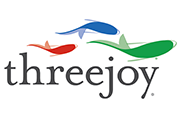What Do Engineers Do During the Day? Hint: It’s Not Math
Engineering education misleads young engineers about what engineering practice is all about. By concentrating almost all classroom air time on mathematics and the solution of well-formed problem s in physics or engineering science, we give young people the impression that they will spend most of their time doing these things at work in there real world.
Yet careful reflection about what engineers actually do during a day reveals that they engage in a variety of acts involving natural language. Engineers write reports, emails, prepare and give presentations, speak on the phone, in the hallway. Only occasionally do engineers do math, solve problems, and the other things that most of their training concentrated on.
As a result, there is a need following the usual cold war engineering education to backfill a young engineer’s education in the area of communication, but even these well-intended efforts concentrate on macro matters of form and ignore micro-level concerns for the nuts and bolts of language. Fortunately, the discipline of philosophy discusses these matters under the rubric of speech acts, and modern coaching practice has made speech acts a core competency.
A good place to read about these matters is in the book Language and the Pursuit of Happiness by Chalmers Brothers, especially chapter 7. Master coach, Lloyd Raines has a lovely handout on speech acts (here) and the wheel of complete communication, illustrated by a number of practical examples.
by Chalmers Brothers, especially chapter 7. Master coach, Lloyd Raines has a lovely handout on speech acts (here) and the wheel of complete communication, illustrated by a number of practical examples.
A small step toward a more practice relevant education would be to incorporate these ideas into engineering education and the pedagogical training of engineering professors and instructors. ThreeJoy offers a number of training courses for students and for faculty in which speech acts play a crucial role. Contact me at deg@threejoy.com to learn more.


 Doing the same thing repeatedly and expecting a different result paraphrases Einstein’s definition of insanity, and one of the insanities of engineering education is the belief that the same old organizational structure (with the same old culture) will give us something substantially different in the delivery of an engineering education. The current organization of higher education goes back to the German idea of a university developed in the 19th century, which itself was built on the scholastic notion of universities of the middle ages. To move beyond University 2.0 of the 19th century requires some rethinking of structure (among other things), but one of the promising directions is the idea of an incubator as implemented at The Illinois Foundry for Innovation in Engineering Education (
Doing the same thing repeatedly and expecting a different result paraphrases Einstein’s definition of insanity, and one of the insanities of engineering education is the belief that the same old organizational structure (with the same old culture) will give us something substantially different in the delivery of an engineering education. The current organization of higher education goes back to the German idea of a university developed in the 19th century, which itself was built on the scholastic notion of universities of the middle ages. To move beyond University 2.0 of the 19th century requires some rethinking of structure (among other things), but one of the promising directions is the idea of an incubator as implemented at The Illinois Foundry for Innovation in Engineering Education ( Griffin, Price & Vojak have released their long-awaited book on serial innovators,
Griffin, Price & Vojak have released their long-awaited book on serial innovators,